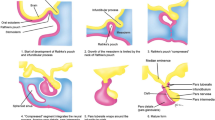Abstract
The clinical presentation of combined pituitary hormone deficiency (CPHD) is variable. Some patients present with hypoglycemia during the neonatal period or during the first few years of life. Others present later in childhood with growth failure. We report on 7 patients with very late diagnosed severe hypopituitarism with pituitary stalk interruption syndrome. Five out of the 7 patients had recently migrated to Belgium and the 2 other patients were from low socio-economic status families. All of them presented to our clinic for short stature and some also complained of lack of pubertal development. Four out of the 7 patients reached final height which was within their target height, despite very delayed treatment.
Conclusion: We illustrate the overall good outcome of these children with delayed diagnosed severe hypopituitarism. Adverse life conditions and social deprivation are thought to be the cause of their late diagnosis. In the current global socio-politic context, pediatricians in high-income countries should stay aware that migration and poor socio-economic status can be associated with specific clinical presentations.
What is Known: • The clinical presentation of combined pituitary hormone deficiency (CPHD) is variable. Some patients present with hypoglycemia during the neonatal period or during the first few years of life. Others present later in childhood with growth failure. • A few case reports are published with very late diagnosis of congenital hypopituitarism. | |
What is New: • We report on the largest series of delayed diagnosis of congenital hypopituitarism and illustrate the survival of these children with overall good prognosis. • Migration and social deprivation are thought to be the main cause of this late diagnosis. |

Similar content being viewed by others
References
Arrigo T, Crisafulli G, Salamone A, Cucinotta D, de Luca F (1994) Adult height exceeding target height in a patient with congenital panhypopituitarism diagnosed after the age of 25 years. J Pediatr Endocrinol 7:269–272
Badawy SZ, Pisarska MD, Wasenko JJ, Buran JJ (1994) Congenital hypopituitarism as part of suprasellar dysplasia. A case report. J Reprod Med 39:643–648
Castinetti F, Reynaud R, Saveanu A, Jullien N, Quentien MH, Rochette C, Barlier A, Enjalbert A, Brue T (2016) Mechanisms in endocrinology: an update in the genetic aetiologies of combined pituitary hormone deficiency. Eur J Endocrinol 174:R239–R247. https://doi.org/10.1530/EJE-15-1095
Den Ouden DT, Kroon M, Hoogland PH et al (2002) A 43-year-old male with untreated panhypopituitarism due to absence of the pituitary stalk: from dwarf to giant. J Clin Endocrinol Metab 87:5430–5434. https://doi.org/10.1210/jc.2002-020672
Grumbach MM (2005) A window of opportunity: the diagnosis of gonadotropin deficiency in the male infant. J Clin Endocrinol Metab. 90(5):3122–3127
Jain V, Kannan L, Kumar P (2011) Congenital hypopituitarism presenting as dilated cardiomyopathy in a child. J Pediatr Endocrinol Metab JPEM 24:767–769
Kageyama K, Watanobe H, Nasushita R et al (1998) A hypopituitary patient who attained tall stature without growth hormone. Intern Med Tokyo Jpn 37:472–475
Marmouch H, Graja S, Arfa S et al (2016) Late-onset pituitary stalk interruption syndrome (PSIS). Pan Afr Med J 23:108. https://doi.org/10.11604/pamj.2016.23.108.8801
Navarro P, Halperin I, Rodríguez C, González JM, Vidal J, Vilardell E (1994) Congenital panhypopituitarism of late onset. J Endocrinol Invest 17:347–350. https://doi.org/10.1007/BF03348997
Pentimone F, Riccioni S, Del Corso L (1999) Congenital hypopituitarism in a 48-year old adult. Natural course, hormonal study and MRI evidence. Minerva Endocrinol 24:87–90
Wada S, Minagawa A, Imamaki K et al (2000) A patient of hypogonadotropic hypogonadism accompanied by growth hormone deficiency and decreased bone mineral density who attained normal growth. Intern Med Tokyo Jpn 39:641–645
Williams (1998) Textbook of endocrinology. Saunders, Philadelphia
Author information
Authors and Affiliations
Contributions
EB, CB, and CH designed the study; EB and MC collected and analyzed the data. EB, MC, CB, and CH wrote the manuscript.
Corresponding author
Ethics declarations
Conflict of interest
The authors declare that they have no conflict of interest.
Ethical approval
This article is a retrospective study, using already available data.
Additional information
Communicated by Peter de Winter
Publisher’s note
Springer Nature remains neutral with regard to jurisdictional claims in published maps and institutional affiliations.
Rights and permissions
About this article
Cite this article
Boros, E., Casimir, M., Heinrichs, C. et al. Delayed diagnosis of congenital hypopituitarism associated with low socio-economic status and/or migration. Eur J Pediatr 179, 151–155 (2020). https://doi.org/10.1007/s00431-019-03489-3
Received:
Revised:
Accepted:
Published:
Issue Date:
DOI: https://doi.org/10.1007/s00431-019-03489-3




